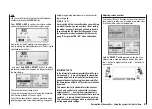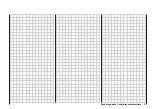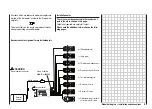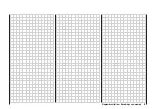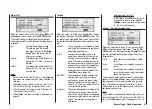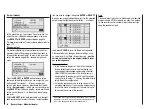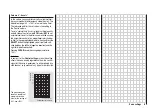
34
If you have already read through the manual to this point
you will undoubtedly have made your fi rst attempt at
programming the system already. Even so, it is impor-
tant to describe each menu here in detail, to ensure that
you have comprehensive instructions for each applicati-
on you are likely to encounter. On page 20 we have al-
ready explained how you move to the basic transmitter
display via Channel Select. In this section we start with
setting up a “empty” model memory prior to “program-
ming” a new model:
Note:
You can adjust the screen contrast at any time by pres-
sing the “
+
” or “
-
” button (right-hand rocker button) whilst
holding the
SELECT
button held in.
From the basic display press
ENTER
(left-hand rocker
button) to move to the “Multi-function list”. You can return
to the basic screen at any time by pressing
ESC
.
If necessary, select the »
Model memory
« menu from
the list using the right-hand rocker button, then press
ENTER
or
SELECT
.
Now press
ENTER
or
SELECT
again to move on to the
»
Call up model
« sub-menu.
Detailed description of programming
Reserving a new memory
Program description – Reserving a new memory
The model memories marked “
empty
” are not yet
in use. Memories which are already occupied appear
with the model name at the appropriate point, as ente-
red in the »
Base settings
« menu (pages 38 and 42).
Use the right-hand rocker button to select one of the
empty model memories 1 to 12, then press
ENTER
or
SELECT
.
You are now invited to select the basic model type, i.e.
either “Fixed-wing” or “Helicopter”.
Use the right-hand rocker button to select the appropria-
te model type, then press
ENTER
or
SELECT
to confi rm
your choice. The screen switches back to the basic dis-
play: the model memory is now reserved.
It is now only possible to change this model memory to
a different model type if you fi rst erase the model memo-
ry (»
Model
memory
« menu, page 36).
Caution:
All the transmitter’s functions are barred, and the trans-
mitter does not broadcast a signal, until you confi rm the
model type you have selected. If you switch off the trans-
mitter before you set the model type, the screen will au-
tomatically switch to the Model Type Select display when
turned on again. You must always defi ne a model type!
• If the warning “Throttle too
high” appears on the screen,
move the throttle stick back in
the direction of idle.
Note for fi xed-wing models and helicopters:
This warning only appears in accordance with the set-
tings you have entered in the “Motor” or “Collective pitch
min.” section of the »
Base settings
« menu, as descri-
bed on pages 39 and 44. If you are setting up a non-po-
wered fi xed-wing model, enter “none” at this point; this
disables the throttle warning message, and makes avai-
lable the “Brake
NN” mixers in the »
Wing mixers
»
menu, which would otherwise be suppressed.
• If the message “Set Fail-Safe”
appears on the screen, please
read the section describing the
»
Fail-safe
» menu on page 82..
throttle
too
high !
adjust
fail
safe
!
Summary of Contents for MX-16S
Page 1: ...1...
Page 17: ...17...
Page 31: ...31 Fixed wing models Installation and connections...
Page 35: ...35 Program description Reserving a new memory...
Page 47: ...47 Base settings Model helicopter...
Page 83: ...83 Fail safe...
Page 89: ...89 Programming examples Fixed wing model...
Page 109: ...109 Programming examples Model helicopter...
Page 112: ...112 112...
Page 116: ...116...


